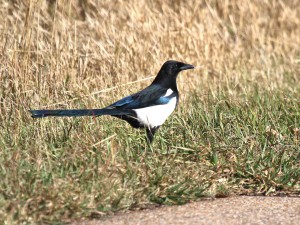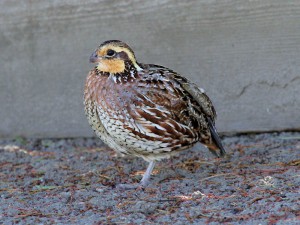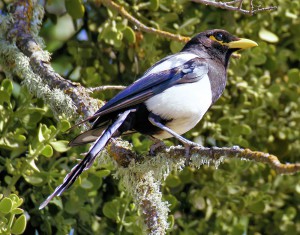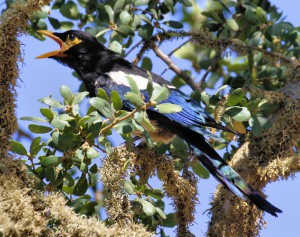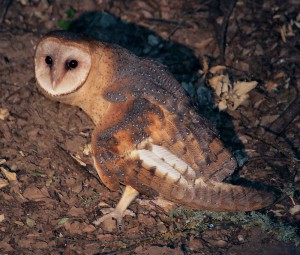In January of 2012, birders at the Morro Bay Birding Festival discovered an Arctic Loon in San Simeon. Instantly, we knew we needed to chase it. You just cannot pass up a bird this good! So we started planning. We would leave before dawn, travel light, and take in a bunch of other spots on the way back… Which is why three of us met at 4 am on a Sunday morning. We stuffed a bunch of scopes and other gear into the back of an SUV and took off. Staying awake on the way there wasn’t hard. Rarity chases get the blood flowing! Hopes run high (this was a life bird for two of us) and the conversation never lags.
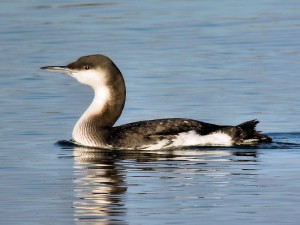
Arctic Loon in basic plumage
Arctic Loon!
When we got to the spot at 8:15 am, two of California’s best-known birders greeted us warmly: “What took you so long?!” The loon sat there right in front of us at close range, a total anticlimax! It fished in the same small lagoon at the mouth of San Simeon Creek. There it rubbed shoulders with the gulls, coots, cormorants and grebes, pretty much slumming it. This Arctic Loon was not at all shy, swimming about and preening unconcernedly while allowing close approach of multiple birders with their scopes, tripods and cameras with big lenses. We got stunning looks and took tons of pictures, some of which even came out!
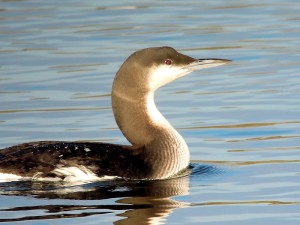
Blinking Arctic Loon
These shots were all taken with a Nikon CoolPix P300 camera, attached with a Sayegh Digidapter for Kowa TE-10Z and TE-11WZ to a Kowa TSN-883 spotting scope equipped with a Kowa TE-11WZ 25-60x Zoom Eyepiece. That’s it. Just point and shoot. The loon did make things challenging occasionally by diving – loon watching is frequently an intermittent occupation. With the bird as close as this, sometimes it was hard to actually keep it in frame, but who’s complaining?! And of course sometimes there’s a bit of luck involved. Here, the camera accidentally caught the bird blinking the nictitating membrane after coming up from a dive. The only difficulty here was in picking which of the hundred photographs to use for this post!
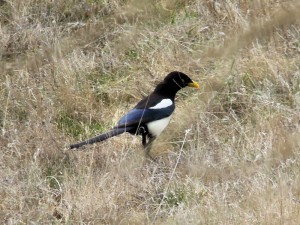
Yellow-billed Magpie
Other Local Attractions
You would think it would be all downhill from there. However, on this fabulous whirlwind birding trip, hits just kept coming. Chestnut-backed Chickadee – probably a dirt-bird to the locals, but we don’t get to see those very often in Orange County. In the day, we saw 4 of the world’s 5 loon species, all three scoters and 6 of our 7 grebe species.
Tracking inland from there and making our way back south, we saw a pair of Golden Eagles and a brilliant male Lapland Longspur in the company of about a hundred Horned Larks. We also saw one of California’s two endemic bird species: Yellow-billed Magpies. This provided a showcase for what digiscoping can do by way of photo-documentation. This magpie was easily 75 yards distant and crawling through obscuring grass on a hillside beneath live oaks, yet the camera still did a passable job with it. In the end though, the best bird of the day was still that magnificent loon.
